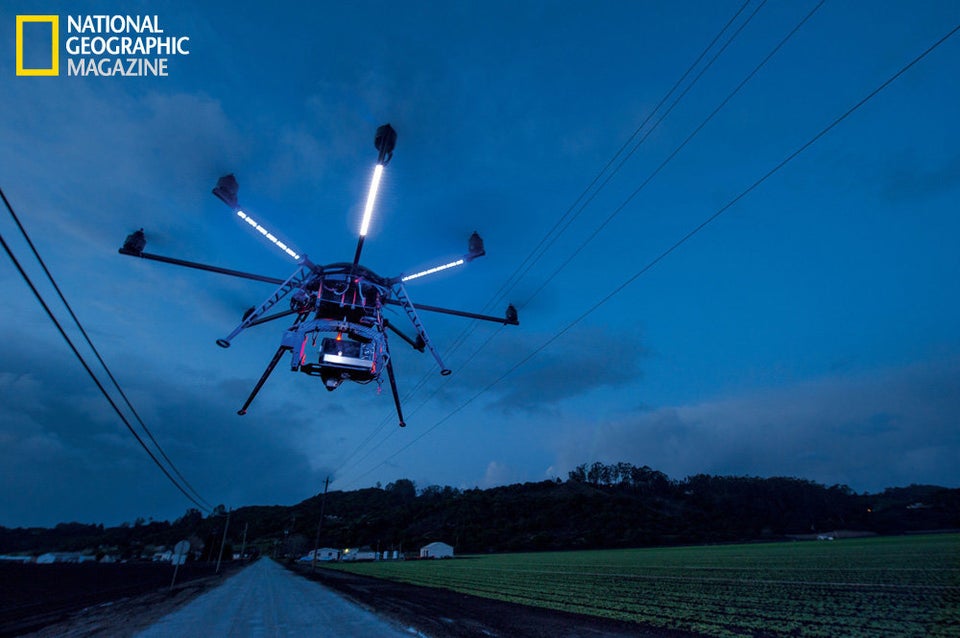Who had ever heard of the Predator or the Reaper a decade ago? Who could imagine that small, unmanned aircrafts would roam the skies, collect information, and take out a country's worst enemies?
In the March issue of National Geographic, reporter John Horgan and photographer Joe McNally take a look at the remarkable rise of drones in the past years. Unmanned aerial vehicles (UAVs) have proved indispensable for America in its operations abroad, but will drones take over U.S. skies, too?
Then came 9/11, followed by the U.S. invasions of Afghanistan and Iraq, and drones rapidly became an essential tool of the U.S. armed forces. The Pentagon armed the Predator and a larger unmanned surveillance plane, the Reaper, with missiles, so that their operators—sitting in offices in places like Nevada or New York—could destroy as well as spy on targets thousands of miles away. Aerospace firms churned out a host of smaller drones with increasingly clever computer chips and keen sensors—cameras but also instruments that measure airborne chemicals, pathogens, radioactive materials.
The U.S. has deployed more than 11,000 military drones, up from fewer than 200 in 2002. They carry out a wide variety of missions while saving money and American lives. Within a generation they could replace most manned military aircraft, says John Pike, a defense expert at the think tank GlobalSecurity.org. Pike suspects that the F-35 Lightning II, now under development by Lockheed Martin, might be "the last fighter with an ejector seat, and might get converted into a drone itself."
At least 50 other countries have drones, and some, notably China, Israel, and Iran, have their own manufacturers. Aviation firms—as well as university and government researchers—are designing a flock of next-generation aircraft, ranging in size from robotic moths and hummingbirds to Boeing’s Phantom Eye, a hydrogen-fueled behemoth with a 150-foot wingspan that can cruise at 65,000 feet for up to four days.
More than a thousand companies, from tiny start-ups like Miser’s to major defense contractors, are now in the drone business—and some are trying to steer drones into the civilian world. Predators already help Customs and Border Protection agents spot smugglers and illegal immigrants sneaking into the U.S. NASA-operated Global Hawks record atmospheric data and peer into hurricanes. Drones have helped scientists gather data on volcanoes in Costa Rica, archaeological sites in Russia and Peru, and flooding in North Dakota.
The U.S. Federal Aviation Administration has until Sep. 30, 2015 to open America's airspace to commercial drones. "The sky's the limit, pun intended," Bill Borgia, an engineer at Lockheed Martin, tells National Geographic. "Once we get UAVs in the hands of potential users, they’ll think of lots of cool applications."
Not everyone is as excited, however. Critics worry about civilians' privacy when private and commercial drones start monitoring the skies above. "With these aircraft hovering above our heads, privacy is at risk as drone technology has far outpaced the development of corresponding regulatory laws," Eugene K. Chow, editor at Homeland Security NewsWire, blogs for HuffPost.
Take a look at some incredible drone photos by Joe McNally in the slideshow below, and read the fascinating full article in the March issue of National Geographic.
